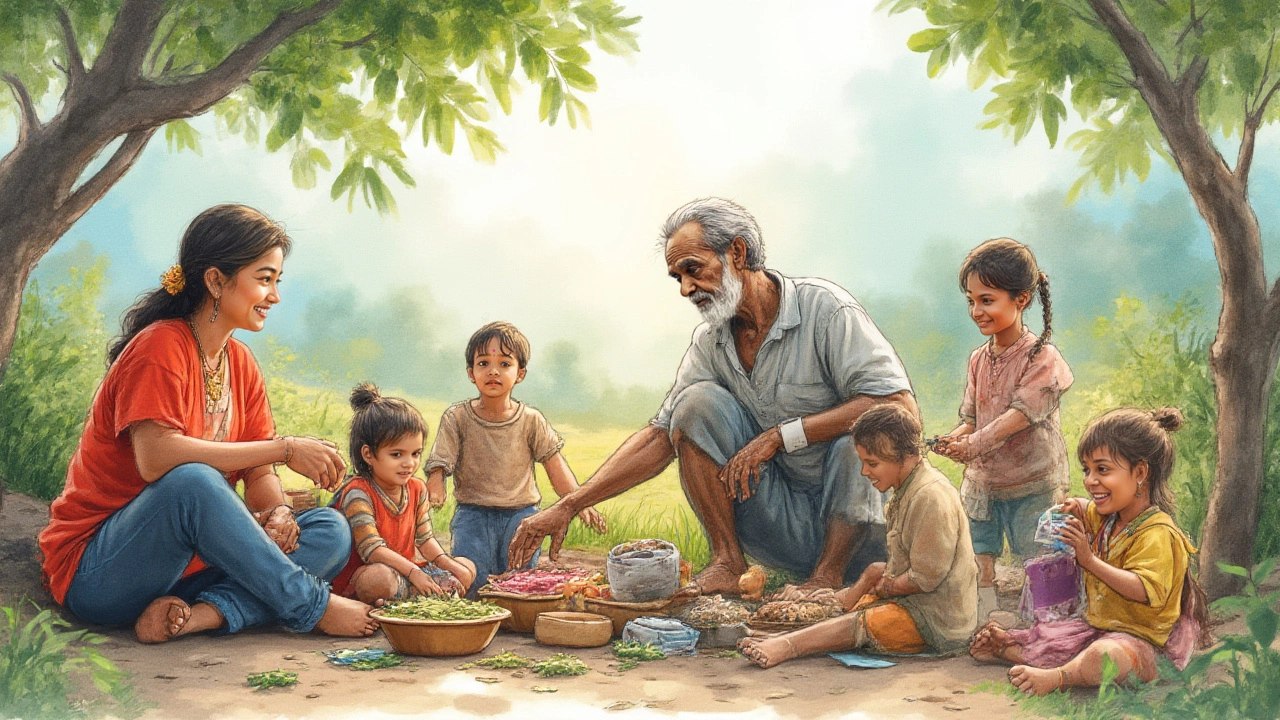Picture this: you have a brilliant project idea, endless enthusiasm, and more tasks than you can juggle. You need helping hands—reliable, genuine, and easy to work with. But what should you actually look for when picking a volunteer? With so many folks eager to do good, the hardest thing can be saying no or knowing whom to trust. Too often, it comes down to a race between the person who emails first and the one who brings the most cupcakes. But real life’s a bit more complicated than that, especially if your project matters.
Understanding the Role and the Need
Before you even start sorting through eager applicants, get crystal clear on what you actually need a volunteer to do. Are you looking for someone to organise boxes at the food bank, plan youth activities, or maybe run a fundraiser? Each of these needs a totally different skill set. According to a 2024 survey by NCVO (National Council for Voluntary Organisations), over 60% of UK charities felt that “unclear expectations” were the top reason volunteers left early and unhappy. It’s like handing someone a toolbox and not telling them whether you’re fixing a bike or building a bookshelf.
Think about the tasks, the time commitment, and the working environment. For example, if it’s for elderly care, you’ll want someone patient, perhaps with some experience handling sensitive situations. For charity events, you’ll want energy, flexibility, and maybe someone who loves a bit of chaos—but in a good way. The right fit doesn’t mean picking a superhero, just someone whose skills and personality match the role. Sit down, jot out what a typical ‘day’ as your volunteer might look like, and write a simple, clear description. You’ll save yourself and your volunteer confusion and frustration down the line.
A concrete list of ‘must-haves’ and ‘nice-to-haves’ (think: reliability, specific skills, willingness to learn), plus outlining deal-breakers (like not being able to work certain hours or not comfortable with some tasks), can help you spot the best fit faster than trawling through endless application forms.
What to Look For in a Volunteer
Now the applications are pouring in—emails, messages, or parents offering their teenagers as a Saturday project. Who makes the cut? Volunteers aren’t just extra arms; they’re a vibe—someone who’ll either energise your group or bring it down. So what counts most? Reliability always wins, every single time. “It’s better to have one person you can count on than five who might forget to show up,” says Jane Ashworth from Volunteer Bristol. This rings true whether you’re sorting food donations or running a community sports club.
Besides reliability, attitude is a big deal. Skills can be taught, but a kind, curious, and can-do attitude is pretty much gold dust. Look for people who ask questions, show up on time, and seem genuinely interested in your cause. It’s rarely about perfect CVs; you’re not hiring for NASA. Often, teenagers volunteering for a bronze Duke of Edinburgh award will surprise you with grit, creativity, and willingness to learn.
And here’s something that might surprise you: diversity matters more than you might think. Mixing up ages, backgrounds, and personalities brings out better problem-solving and stronger community ties. The British Red Cross found that teams made up of different age groups and cultures managed crises more calmly and found more creative solutions. So think about who isn’t usually in your group, and see if someone unexpected might turn out to be just what you needed.

Red Flags and Green Lights
Let’s talk red flags. If someone’s only asking about perks (like free pizza or a reference letter), treat it as a gentle warning sign. Passion for the role, even if it’s quiet and modest, should show up pretty quickly. Another biggie: lack of response or flakiness, such as being late to meetings or taking ages to reply to emails. Especially in roles working with children or vulnerable adults, good communication and reliability aren’t just nice to have—they’re essential.
Green lights, on the other hand, can be small things: a thoughtful question about the beneficiaries of your project, or a follow-up email thanking you for your time. Some high school students have been known to do background reading about the community food bank before orientation—small acts like these tell you someone’s invested and self-driven. A background check may be necessary for specific roles (especially if you’re working with minors, the elderly, or sensitive information). As an extra tip, don’t be afraid to ask for references or a basic DBS (Disclosure and Barring Service) check if the job warrants it—legitimate volunteers won’t mind; in fact, most will see it as a sign your project is responsibly run. As the NCVO puts it:
“Volunteers are the lifeblood of community projects, but safety and trust are just as critical as enthusiasm.”
Sometimes, it’s tempting to take on anyone who offers help—after all, who wants to turn away a willing hand? But don’t. It’s much less awkward to say no during the selection process than regret a mismatch when you’re knee-deep in donated tinned tomatoes or prepping for a big charity run.
The Interview: Making the Most of Your First Chat
Whether your chat is over coffee, Zoom, or a good old walk by the floating harbour here in Bristol, that first conversation tells you everything. Even if it’s just ten minutes, come prepared. Ask not just about experience, but about how they handle stress, changes to plans, or difficult people. No need to grill them, just chat. For example: “Tell me about a time something didn’t go to plan—what did you do?” or “What are you most looking forward to about volunteering?” If your gut says something’s off—maybe someone’s evasive, can’t explain why they want to help, or just doesn’t seem interested—don’t ignore it.
But don’t be afraid of awkward silences! Sometimes, those little pauses give people a chance to say something longer and more honest. I’ve met volunteers who, when given a moment, talked about managing anxiety, starting over after a tough year, or a quiet wish to make friends. That honesty builds trust. And trust, once earned, ripples through your whole group.
Another great tip: ask them what they hope to gain or learn. Some want work experience, others want to feel useful, and some just crave connection—a rare thing in our hyperconnected but often lonely world. Knowing this helps you support them as much as they support you. If you have a small group or ongoing projects, consider a short trial or shadowing period, so both you and the volunteer can see if it’s a good match before making longer-term commitments.

Onboarding and Keeping Volunteers Engaged
Found the right person? Fantastic, but the work isn’t quite done. The first days and weeks are make or break. The biggest mistake is assuming your volunteer will just “pick things up as they go.” Even the most enthusiastic helper needs a bit of structure and support. Schedule a simple orientation—show them where things are, introduce them to the team, explain what success looks like for your group. If you’re running weekly sessions, ask them to help set up, not just observe from the sidelines. The sooner they feel like a real part of things, the sooner they’ll start to own their role.
Keep communication open and regular. Many volunteers drift away simply because they weren’t sure how to ask questions or suggest ideas. A quick WhatsApp group, regular email updates, or a catch-up chat can make all the difference. And don’t forget appreciation—no, not giant banners or gold medals, but small words of thanks or a ‘you did great today’ can genuinely mean a lot. Recognition helps people feel noticed, valued, and more likely to return.
Finally, never stop learning. I check in occasionally—to ask how they’re finding it, what could be better, or if they want to try new things. Volunteer roles change and grow, and the best teams evolve together. As someone living in Bristol, juggling work, kids, and community projects, I’ve seen first-hand how a little effort on the selection side can make everything else run smoother and happier for everyone involved.
Choosing the right volunteer isn’t just ticking names off a list. It’s about building trust, making space for genuine connection, and creating a community that actually works. Take your time, trust your gut, and remember—the right people for your project aren’t always the ones who shout the loudest. Sometimes, they’re the ones quietly getting on with making things better, one small act at a time.
